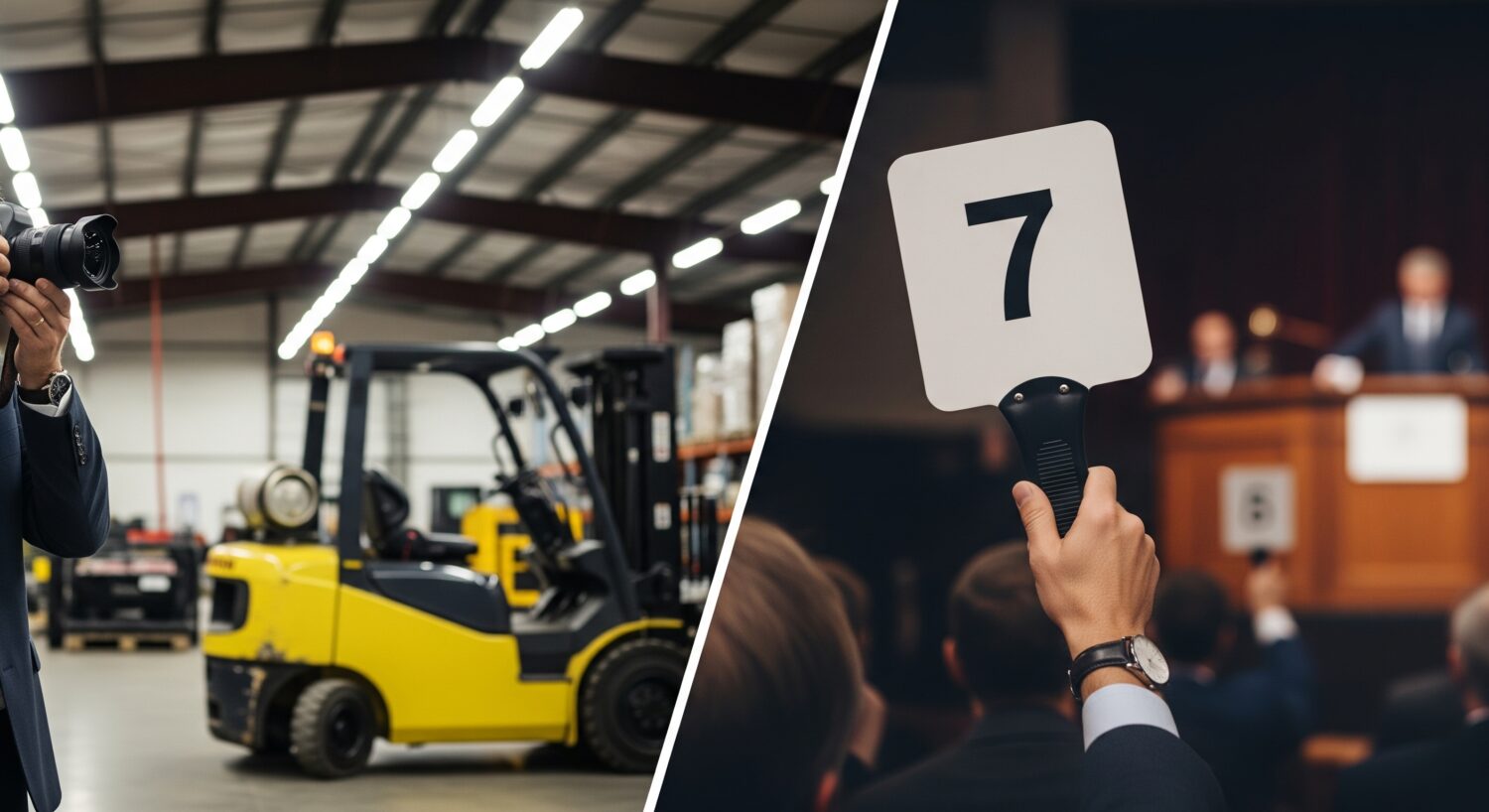Blog

August 12, 2025
More Photos, More Bids: A Veteran Auctioneer’s Advice
Pictures Sell: Why Average Auction Items Deserve Great Photos Too
After years in the auction business, I’ve learned this: most bidders will never set foot in your preview. They’re making their buying decisions with nothing more than the information you put online. And while great photos might seem obvious for your high-ticket items, the real truth is that good photography matters just as much—if not more—for your average, everyday lots.
Here’s why.
1. Most bidders won’t attend a live preview — give them everything you can
We all love the idea of a bustling preview day, but the reality is, most bidders are scrolling from their couch, phone in hand, coffee in the other. If you want to turn that casual scroll into a bid, you have to show them everything they need to make a confident buying decision. That means multiple angles, close-ups, and clear detail shots, even if the item isn’t the star of the sale.
The more they can “handle” the item with their eyes, the more comfortable they are clicking the bid button.
2. If you don’t show it, most bidders will assume the worst
We all know the seasoned bidders who can spot missing photos like a hawk. If there’s no back view, they assume there’s damage. If there’s no close-up, they assume the detail is poor. It’s human nature — in the absence of information, people fill in the blanks, and in auctions, those blanks tend to be negative.
The fix? Show them everything up front. It’s far better to eliminate doubt before bidding than to watch your prices sag because bidders are cautious.
3. Don’t hide defects — transparency builds trust (and protects you later)
It’s tempting to skip a photo that shows a scratch, crack, or missing piece, especially if you think it will hurt the price. But here’s the thing: it will hurt you more if the buyer feels misled after the fact. Disputes, bad reviews, and strained relationships can cost far more than a single lot selling for less than you hoped.
Good buyers appreciate honesty. If you clearly show defects, you set realistic expectations — and attract bidders who are still willing to buy at the right price. In the long run, that honesty pays off.
4. The first photo takes all the time — the rest are seconds
We’ve all heard the excuse: “I don’t have time to take extra pictures.” But the truth is, setting up the item, lighting it, and framing the first shot is what takes the effort. Once you’ve done that, snapping a few more photos from different angles takes only seconds.
Think of it as a small investment for a big return. Those extra 15–20 seconds could mean the difference between a hesitant $25 bid and a confident $50 bid.
5. Good photos make average items stand out
Not every lot is going to be a showstopper — that’s the reality of auctions. But good photography can make even common items more attractive. A clean, well-lit image shows bidders you care about every lot in the sale, not just the high-value ones. That professionalism builds trust in your entire catalog.
6. Consistency is part of your brand
If one lot has crystal-clear photos and another looks like it was shot in a dim garage, it sends a message: “We don’t put equal care into every item.” Even subconsciously, bidders will notice. Consistent quality across your catalog reinforces your reputation as a professional operation — and that reputation is one of your biggest assets.
7. Photos are your 24/7 sales staff
Once your catalog goes live, your photos are doing the selling while you sleep. A bidder in another time zone might be scrolling at midnight, comparing similar items across multiple auctions. If your photos give them the most confidence, you’re the one who’s going to get their bid.
The takeaway
Average items make up the bulk of most auction, and collectively, they can account for a big chunk of your gross. Treating them with the same photographic care you give your top sellers can boost bidder confidence, reduce disputes, and strengthen your professional reputation.
So next time you’re tempted to snap one quick photo and move on, remember:
- Most bidders won’t see it in person.
- If you don’t show it, they’ll assume the worst.
- Hiding defects is a short-term gain and a long-term headache.
- The extra seconds are worth it.
Your bidders and your bottom line will thank you.
Sales pitch starts here: the reason many auctioneers resist taking more photos isn’t the camera work. It’s the back-end hassle: renaming files, dragging and dropping, matching them to the right lot, and fixing mistakes. That’s where AIM changes everything. With AIM, you simply select the lot, online or offline, and start shooting. It’s mobile cataloging perfection. Every photo is automatically assigned to the right item. No barcodes. No renumbering. No post-processing headaches. Just point, shoot, and move on. The result? More photos, better catalogs, and happier bidders without adding hours to your workflow.
Stop letting the process hold you back — see how AIM can make cataloging faster, easier, and more accurate today.